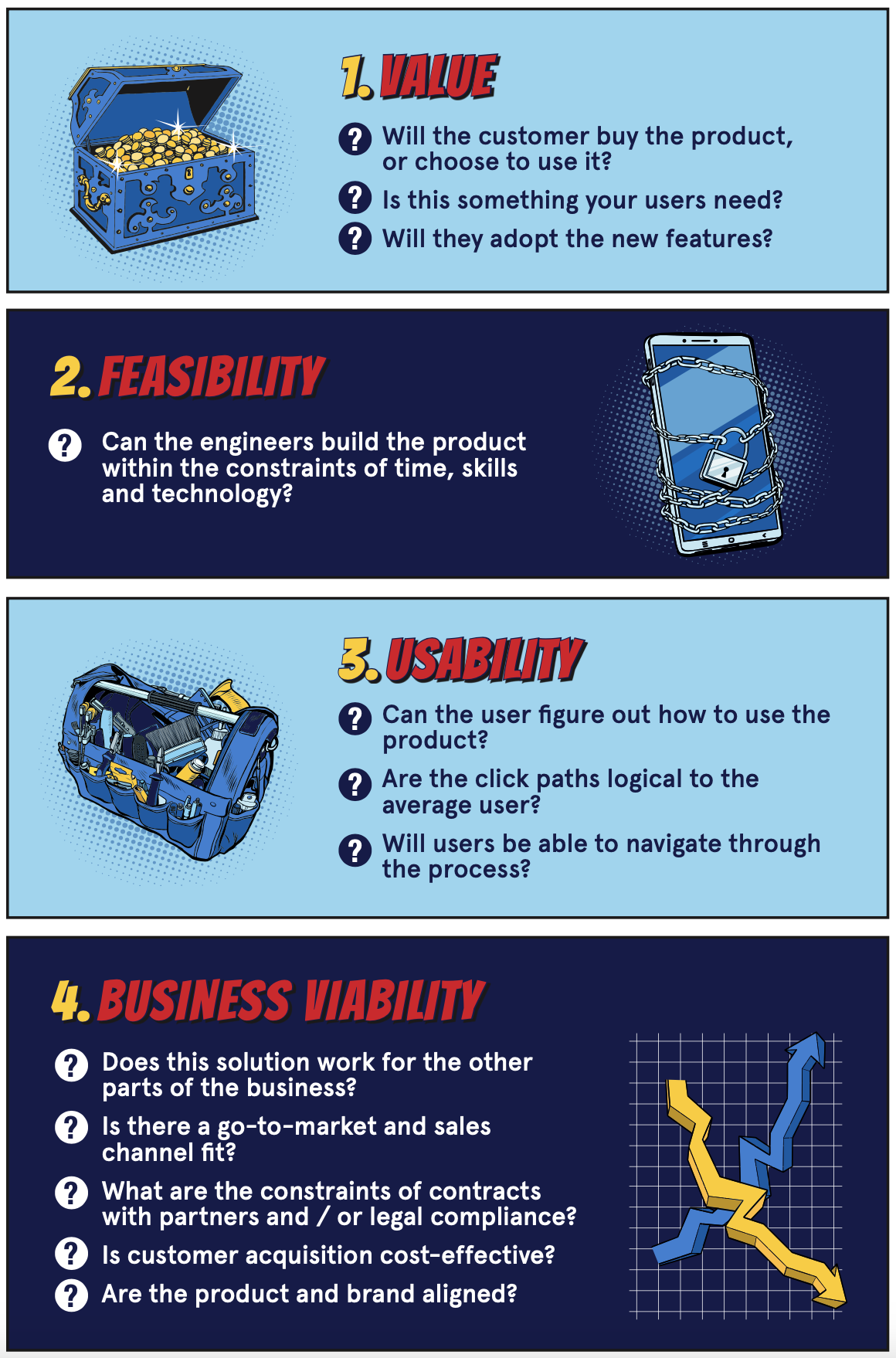You’re convinced of the value of being product led (and the very real risks of not being product led) and have decided to adopt the practices of the best product companies.
Brilliant. So, what now?
In theory, becoming product-led is simple. In reality, very few organisations make the transition successfully.
Those that do, like Amazon, Netflix and Adobe, continue to disrupt, innovate and achieve product success. They thrive in the face of challenges and grasp new market opportunities with gusto.
Before you begin, it’s important to realise that becoming product led means you are changing how you solve problems for customers.
Marty Cagan, founder of Silicon Valley Product Group, says this means “moving from stakeholder-driven roadmaps and feature teams, to empowered product teams given problems to solve, and then using product discovery to come up with solutions that are valuable, usable, feasible and viable.”
This means the first and most important thing you need to become truly product-led is empowered product teams.
We talked in our last article about what makes empowered product teams better than feature or delivery teams.
Here’s a quick recap:
If your teams are given a detailed set of requirements or a feature backlog and it’s your executives who are responsible for business and customer value, it’s likely your teams are set up as delivery or feature teams.
On the other hand, if your teams start with a problem to solve, are focused on managing risk, and are accountable for the success of the product, there’s a good chance you have empowered product teams.
Laying the foundations
There are certain pillars you need in place to become product-led – such as a compelling vision, focused product strategy and the right team topology – which we’ll focus on in the next article.
But becoming product-led runs deeper than that. It’s about cultivating a mindset and cultural change that think about the product first. For that, you need to make sure you have the right people with the right mindset:
1. CEOThe transition to product-led often demands fundamental change across every part of the company.
The leadership team is team number one. Your CEO and leadership need to be aligned and committed to drive that scale of sustained change.
“Grass roots only will soon hit a glass ceiling” -- Jonathan Smart, Sooner Safer Happier
Identify who your product leaders and evangelists are and ensure they are connected and aligned with the CEO. The CEO and leadership team need to open up the decision-making process to a wider, larger and more diverse group of stakeholders.
The goal is to shift the product team from a subservient relationship, where they were order takers for the business, to a collaborative relationship where they discover a solution that customers love, yet also deliver value for the business.
2. Product leaders
A successful transition can only happen with strong product leaders – that is, the people who lead product management, product design, and engineering. The importance of this can’t be stressed enough.
The State of DevOps Report 2017, which collated research from more than 3200 people, found that low performing teams had leaders with the lowest transformation leader scores.
Product leaders need to be stepping up and willing to model the right leadership behaviours, because they are the people responsible and accountable for everything that follows.
In a feature team organisation, these people have a much easier job than in an organisation with empowered product teams. In a feature team organisation, teams are just there to serve the business. That's not the case in empowered product teams, where the team needs a product vision, product strategy, and a well-thought-out product roadmap – all of which the product leaders are there to provide.
3. Product managers
Do you have true product managers? Without strong, competent product managers you cannot have empowered product teams.
In organisations that are not product-led, often the product manager is not customer-facing enough to understand the problem they are solving, which means they act as an order taker, rather than driving the strategic direction of the product and the roadmap.
Product managers should have deep knowledge about customers. But it’s not only customers; they should understand all the dimensions of the company – sales, marketing, services, security, privacy, funding, and beyond.
Everyone needs to think like a product person
Becoming product-led means thinking like a product person. That means focusing on customer outcomes (not outputs) whilst considering the major risks.
In his book INSPIRED, Marty Cagan outlined Four Big Risks with everything we pursue in product:
- Value (users won't buy or want to use it)
- Usability (users won't be able to use it)
- Feasibility (it will be harder to build than you thought)
- Business Viability (it will not fit with our overall business model).
The last one (business viability) is critical, because as Cagan says, “It’s not enough to create a product your customers love; the product must also work for your business.”
Think of the Four Big Risks as a framework to help you consider what could go wrong, before moving ahead to develop a feature.
In an empowered product team, everyone has a job to think about these risks. The product manager is responsible and accountable for addressing value and viability risk, the designer covers usability, and the tech lead covers feasibility.

Start small
Empowered product teams require a high trust culture and that takes time – which means, you should start small. A small pilot will build confidence and, with confidence, trust and empowerment can follow. In most organisations, you will be able to get support to pilot a new way of working with a single team or domain. Be transparent about what’s working and what’s not. Share your measures of success and how you are tracking toward them.
No silver bullets
If you truly want to transform your company to become product-led, and move to empowered product teams, it’s going to take some hard work. There are no silver bullets or shortcuts. But the good news is there are partners who can help, and Propel is one of them. We are a strategic development partner with proven experience helping clients move from sales-led, tech-led or visionary-led companies to product-led companies primed for product success.

